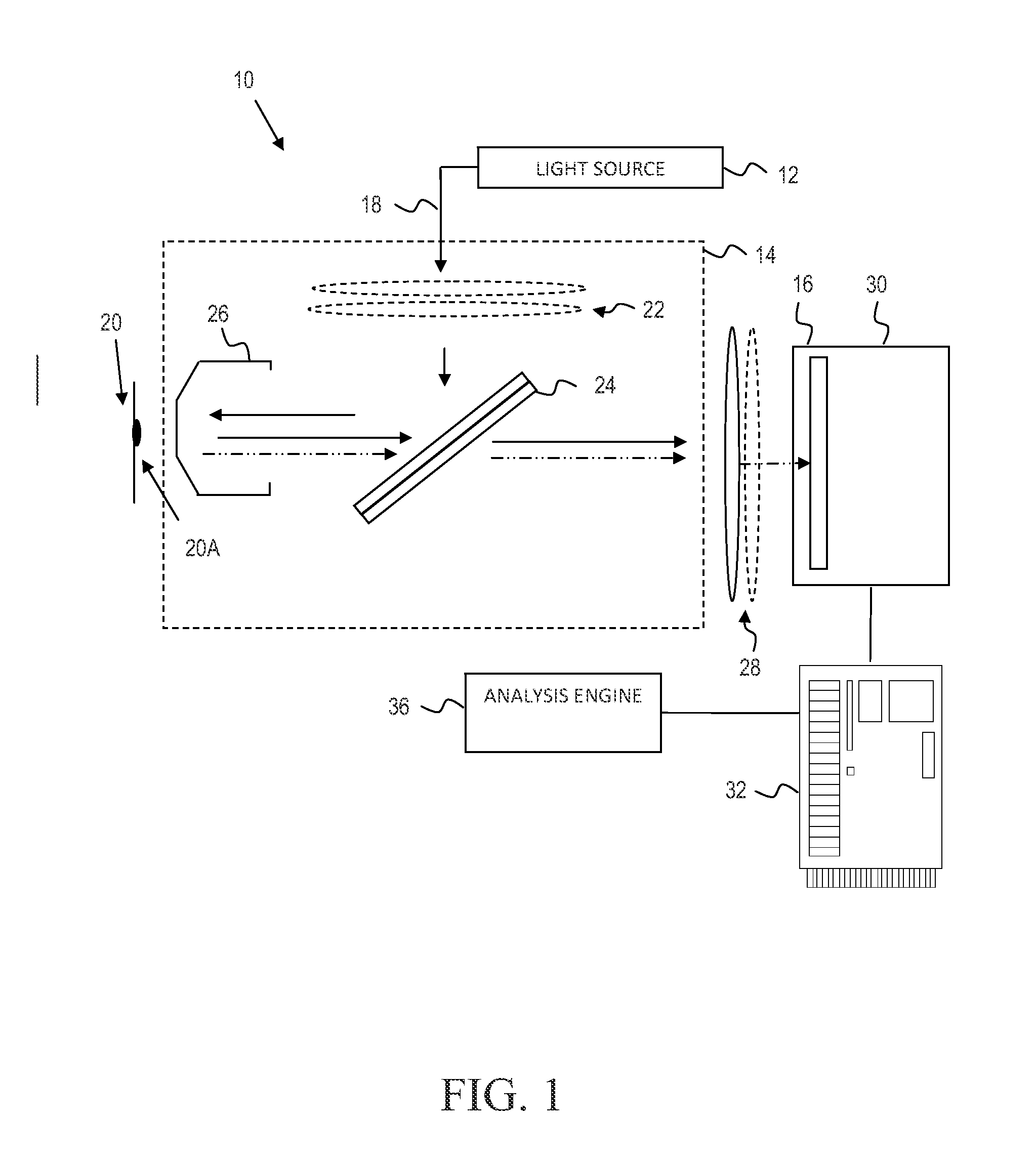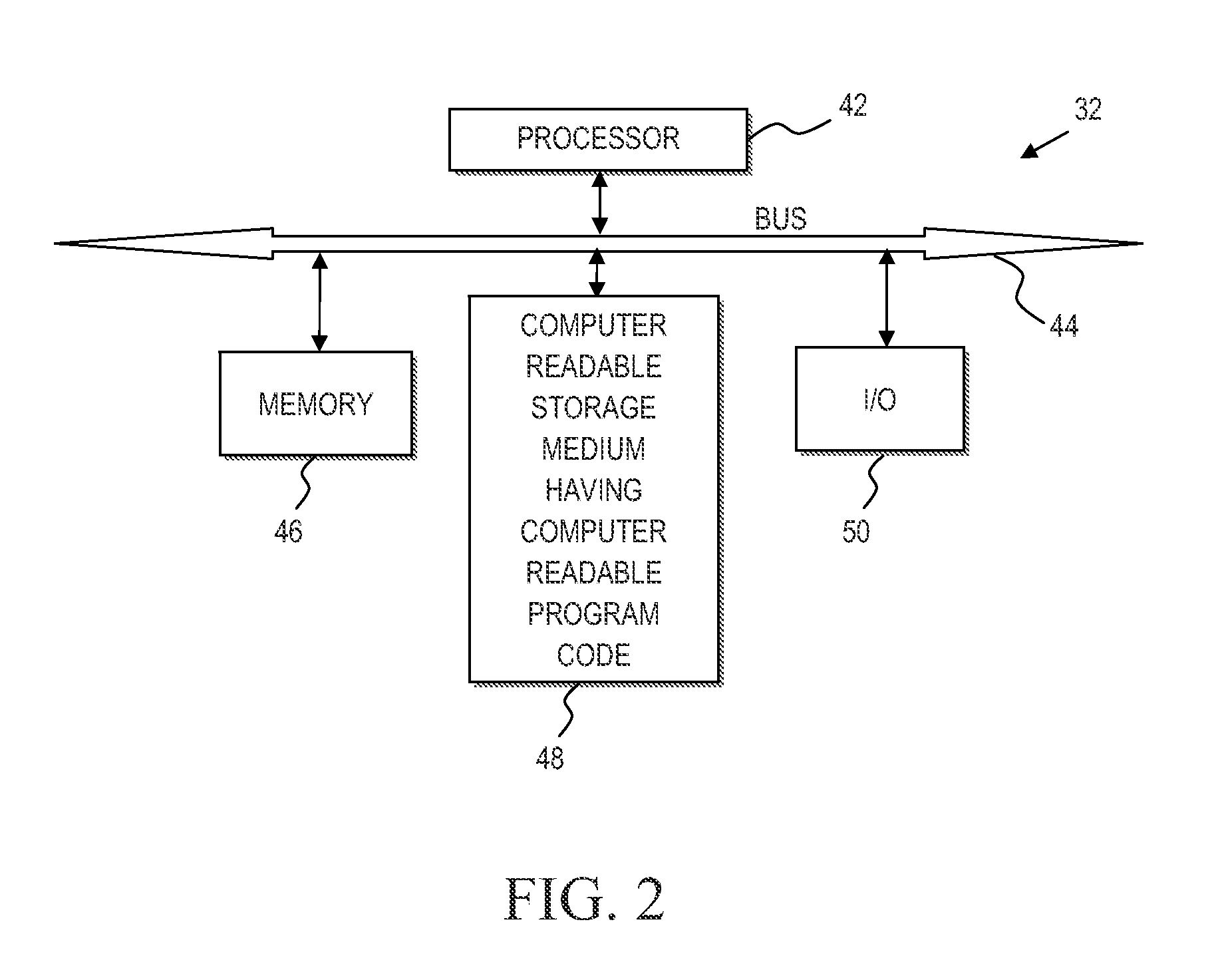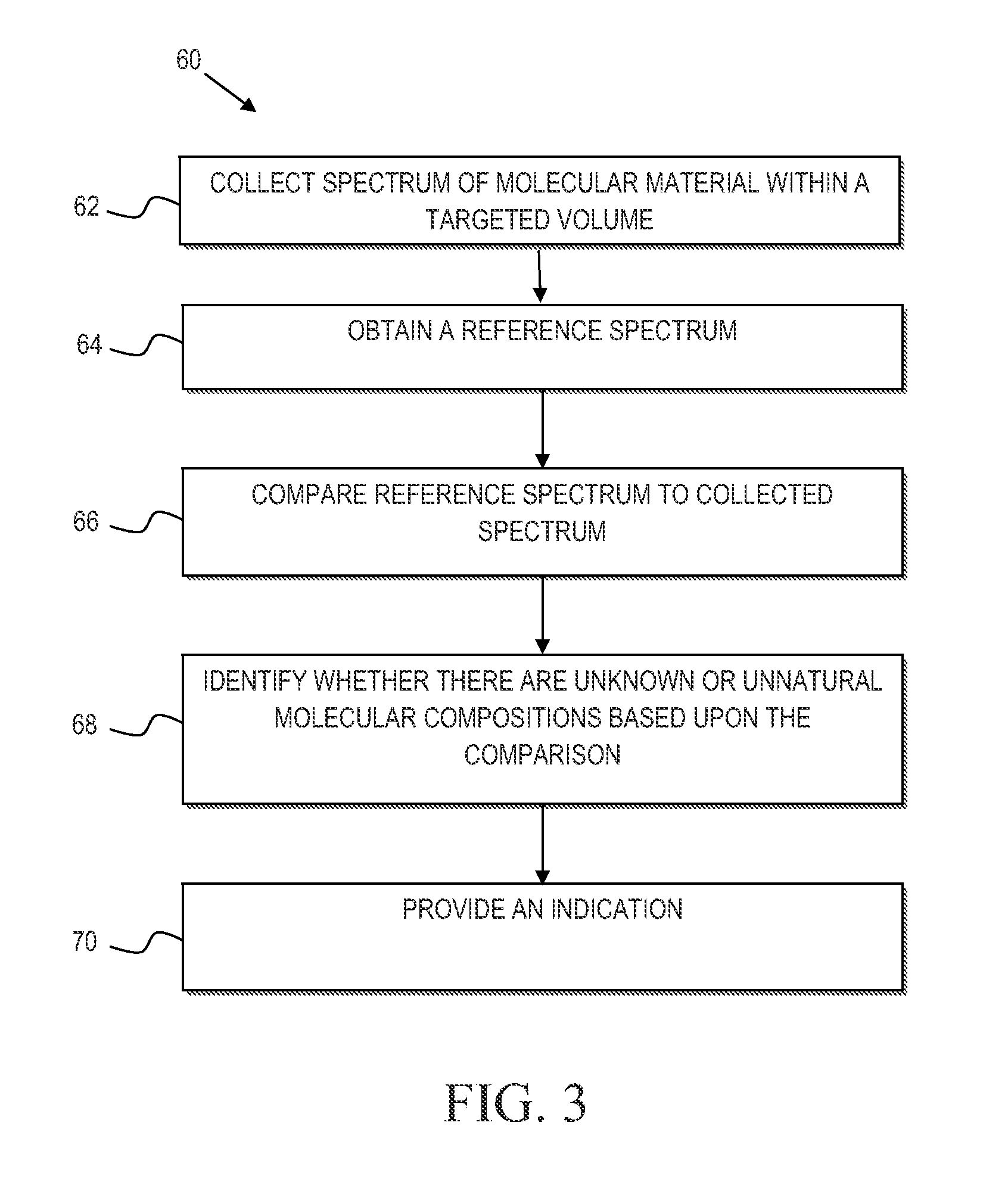Identification of mycoplasm contamination in biotechnology production using raman spectroscopy
a technology of raman spectroscopy and mycoplasma, which is applied in the field of detection of mycoplasmas, can solve the problems of mycoplasma /i>contamination of cell culture systems that are detrimental to such bioprocess manufacturing applications, mycoplasma /i>is extremely small and difficult to detect and filter, and mycoplasma /i>can cause unexpected deviations in the host cell
- Summary
- Abstract
- Description
- Claims
- Application Information
AI Technical Summary
Benefits of technology
Problems solved by technology
Method used
Image
Examples
Embodiment Construction
[0012]Many bioprocesses utilize cell cultures. For instance, a bioprocess may utilize hosts cells for the industrial production of recombinant protein pharmaceuticals. By way of illustration, biotechnology in pharmaceutical manufacturing use recombinant technology to modify materials within bacteria, such as Escherichia coli (E. coli), to produce human insulin. Further, a wide variety of other cell lines are used to contain and serve as a template for the biosynthesis of many new drugs. However, when the cell lines become contaminated, the recombinant process does not yield the correct therapeutic material or drug.
[0013]Mycoplasma is a common and difficult to diagnose contaminant of such bioprocess manufacturing applications. For instance, mycoplasmas can contaminate and destroy cell cultures utilized used to catalyze biochemical reactions within microorganisms. Moreover, mycoplasma can persist for long periods of time without apparent cell damage, which can cause challenges in the ...
PUM
 Login to View More
Login to View More Abstract
Description
Claims
Application Information
 Login to View More
Login to View More - R&D
- Intellectual Property
- Life Sciences
- Materials
- Tech Scout
- Unparalleled Data Quality
- Higher Quality Content
- 60% Fewer Hallucinations
Browse by: Latest US Patents, China's latest patents, Technical Efficacy Thesaurus, Application Domain, Technology Topic, Popular Technical Reports.
© 2025 PatSnap. All rights reserved.Legal|Privacy policy|Modern Slavery Act Transparency Statement|Sitemap|About US| Contact US: help@patsnap.com



